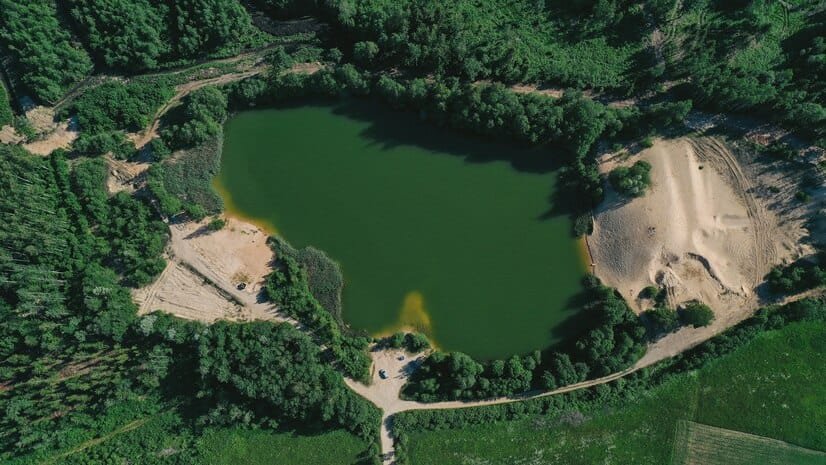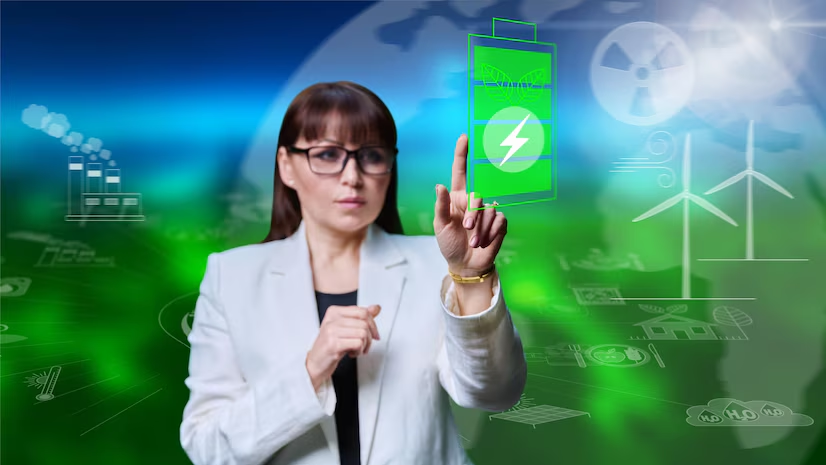Damning Evidence: Hydropower’s Hidden Environmental Toll
Hydropower, long championed as a clean and renewable energy source, is increasingly facing scrutiny for its significant environmental impacts. While lauded for its low-carbon footprint compared to fossil fuels, a closer examination reveals a complex reality. This blog post, “Damning Evidence: Hydropower’s Hidden Environmental Toll,” delves into the often-overlooked ecological consequences of large-scale hydroelectric projects. The global landscape currently sees a surge in hydropower development, driven by increasing energy demands and climate change mitigation goals. However, this expansion comes at a cost.
The significance of understanding these environmental impacts cannot be overstated. Hydropower projects, particularly large dams, can drastically alter river ecosystems, disrupting crucial hydrological processes, fish migration patterns, and sediment transport. For example, the Three Gorges Dam in China, while a significant energy producer, has led to significant biodiversity loss and altered downstream sediment flow, impacting agriculture and water quality. Similarly, the Belo Monte Dam in Brazil has faced criticism for its impact on indigenous communities and the Amazon rainforest.
While hydropower offers undeniable advantages – namely renewable energy generation and reduced greenhouse gas emissions – the environmental trade-offs require careful consideration and transparent assessment. This analysis will explore both the positive and negative aspects, examining not only the direct impacts on aquatic ecosystems but also indirect consequences such as methane emissions from reservoirs and the potential for induced seismicity. We will analyze case studies highlighting best practices and critical failures, ultimately aiming to provide a balanced perspective informed by scientific evidence and practical experience. The goal is to foster a more informed discussion around sustainable hydropower development, balancing energy needs with environmental responsibility.
Hydropower Environmental Impact Market: Trends and Actionable Insights
The hydropower environmental impact market is evolving rapidly, driven by increasing energy demands, climate change concerns, and heightened environmental awareness. This analysis identifies key trends, categorizes them, and offers actionable insights for businesses operating within this space.

Positive Trends:
- Growing Demand for Sustainable Energy Solutions: The global shift towards renewable energy sources fuels demand for environmentally responsible hydropower projects. This trend presents opportunities for businesses offering mitigation and monitoring technologies, such as advanced fish passage systems or sediment management solutions. For example, companies like Evoqua Water Technologies are capitalizing on this by providing innovative water treatment solutions for hydropower plants, minimizing their environmental footprint.
- Technological Advancements in Environmental Impact Assessment and Mitigation: Improvements in remote sensing, GIS, and hydrological modeling allow for more accurate prediction and mitigation of environmental impacts. This leads to more efficient project planning and reduces the risk of negative consequences. Companies specializing in these technologies, such as ESRI with its GIS software, are well-positioned to benefit.
- Increased Regulatory Scrutiny and Public Awareness: While presenting challenges (discussed below), stricter environmental regulations also create a market for compliance solutions. Greater public awareness leads to increased demand for transparency and accountability, favoring companies that proactively address environmental concerns. This trend is evident in the growing popularity of Environmental, Social, and Governance (ESG) reporting and certifications.
Adverse Trends:
- Increased Regulatory Scrutiny and Public Opposition: Stringent environmental regulations and increasing public opposition to hydropower projects, particularly those affecting sensitive ecosystems, create significant hurdles. Projects face lengthy permitting processes and potential legal challenges, increasing costs and timelines. The cancellation of several large dam projects due to environmental concerns illustrates this risk.
- Climate Change Impacts on Hydropower Resources: Changes in precipitation patterns, increased frequency of extreme weather events (droughts and floods), and glacier melt affect hydropower generation and exacerbate environmental impacts. This necessitates adaptation strategies like diversification of energy sources and improved water resource management. For instance, some hydropower plants are exploring pumped hydro storage to improve reliability in face of variable water availability.
- Limited Public Understanding of Hydropower’s Environmental Impacts: Misconceptions about hydropower’s environmental impact, often fueled by misinformation, can hinder project acceptance. Businesses need to invest in robust communication strategies to educate stakeholders about the benefits and challenges, showcasing successful mitigation efforts.
Actionable Insights:
- Invest in R&D for advanced mitigation technologies: Companies should focus on developing innovative solutions for fish passage, sediment management, and greenhouse gas emissions reduction.
- Embrace ESG principles and transparency: Proactive engagement with stakeholders, clear communication, and demonstrable commitment to sustainability can mitigate reputational risks and secure project approvals.
- Develop adaptive strategies for climate change impacts: Diversification of energy portfolios, improved water management techniques, and investment in climate-resilient infrastructure are crucial.
- Collaborate with stakeholders: Engage with local communities, environmental NGOs, and regulatory bodies to foster trust and address concerns early in the project lifecycle.
- Leverage technology for improved monitoring and assessment: Utilize advanced technologies to accurately assess environmental impacts, optimize mitigation measures, and enhance transparency.
Concluding Evaluation:
The hydropower environmental impact market presents both significant opportunities and challenges. Companies that proactively address environmental concerns, embrace innovation, and engage transparently with stakeholders will be best positioned for success. Failure to adapt to changing regulations, public sentiment, and climate impacts will lead to project delays, increased costs, and reputational damage. A proactive, adaptive, and transparent approach is vital for navigating this dynamic market.
Healthcare: A hospital system in Norway uses hydropower-generated electricity to power its facilities, reducing its carbon footprint and achieving sustainability goals. This aligns with growing patient and investor demand for environmentally responsible healthcare. However, ensuring consistent energy supply during periods of low water flow requires careful planning and potentially backup power sources, impacting operational costs.
Technology: A data center in Iceland leverages abundant, clean hydropower to cool its servers, minimizing its environmental impact and lowering operational expenses compared to data centers reliant on fossil fuels. A weakness is the geographic limitation of this approach, making it unsuitable for many regions.
Automotives: Electric vehicle (EV) manufacturers are increasingly sourcing hydropower-generated electricity for their battery production and charging infrastructure. This improves the overall environmental profile of EVs. The challenge lies in securing sufficient and reliable hydropower supply to meet the expanding demand for EVs.
Manufacturing: An aluminum smelter in Canada utilizes hydropower for its energy-intensive process. This reduces greenhouse gas emissions significantly compared to smelters powered by fossil fuels. A drawback is potential impacts on local ecosystems due to dam construction and water flow alteration. Mitigation strategies, like fish ladders and environmental monitoring, are crucial.
Tourism: A resort in Switzerland emphasizes its reliance on local hydropower, attracting eco-conscious tourists. This boosts the resort’s brand image and profitability. However, over-reliance on hydropower can make the resort vulnerable to fluctuations in water availability and power prices. Diversification of energy sources can be a strong strategic move.
Analysis: Hydropower presents a compelling opportunity for businesses to lower their carbon footprint and improve their environmental, social, and governance (ESG) profiles. The cost-effectiveness of hydropower in some regions is a significant strength. However, geographical limitations, potential ecosystem impacts, and vulnerability to water resource variability present challenges that necessitate careful planning and mitigation strategies.
Conclusion: Strategic incorporation of hydropower requires a thorough assessment of its environmental impacts, financial viability, and energy security implications. Companies must prioritize transparency and responsible sourcing to build trust with stakeholders and maximize the benefits while minimizing the risks associated with this renewable energy source. Collaboration with local communities and environmental regulators is critical for long-term sustainability.
Organic Strategies:
- Enhanced Fish Passage Technology: Since 2023, several companies have focused on improving fish ladder designs and incorporating advanced technologies like fish guidance systems using artificial intelligence. This minimizes fish mortality and improves migration success rates, addressing a major environmental concern. Strength: Directly tackles a key environmental impact. Weakness: High upfront investment, requires site-specific adaptation.
- Data-Driven River Flow Management: Companies are leveraging real-time data analytics and predictive modeling to optimize reservoir releases, balancing energy production with ecological needs. This allows for more nuanced water flow management, mimicking natural river flow patterns. Strength: Improves ecological health with minimal energy output reduction. Weakness: Requires robust data collection infrastructure and sophisticated software.
- Improved Sediment Management: Recognizing the importance of sediment for river ecosystems, companies are implementing strategies to better manage sediment transport. This includes developing innovative sediment bypass structures or improving strategies for managing sediment within reservoirs to reduce downstream impacts. Strength: Addresses the long-term effects of sediment trapping. Weakness: Implementation can be complex and expensive, depending on the specifics of the site.
Inorganic Strategies:
- Strategic Partnerships with NGOs: Many companies have formed partnerships with environmental NGOs to enhance their environmental impact assessment and mitigation strategies. This provides access to expert knowledge and strengthens their credibility with stakeholders. Strength: Builds trust and improves transparency. Weakness: Requires careful selection of partners and effective communication.
- Acquisitions of Environmental Tech Companies: Companies are acquiring smaller firms specializing in technologies like advanced monitoring systems or innovative mitigation techniques. This accelerates their technological advancement and broadens their service offerings. Strength: Rapid expansion of capabilities. Weakness: Integration challenges and potential high acquisition costs.
- Investment in R&D for Sustainable Hydropower: Since 2023, increased investment in research and development is visible, focusing on less impactful hydropower technologies such as run-of-river projects and improvements in turbine designs to reduce fish entrainment. Strength: Long-term solution with sustainable development. Weakness: Requires significant upfront investment with uncertain long-term returns.
Concluding Evaluation:
Organic strategies show promise in directly addressing environmental impacts. However, high upfront costs and site-specific adaptation requirements pose challenges. Inorganic strategies like strategic partnerships and acquisitions accelerate the development and implementation of solutions but require careful planning and execution. A balanced approach, combining both organic and inorganic strategies, is crucial for sustainable hydropower development, leveraging technological innovation while prioritizing collaboration and transparency. The success of these strategies hinges on effective communication, robust data management and a long-term commitment to environmental responsibility.

Outlook & Summary: Navigating the Murky Waters of Hydropower’s Environmental Impact
This article, “Damning Evidence: Hydropower’s Hidden Environmental Toll,” examines the often-overlooked ecological consequences of hydropower generation, contrasting its touted “clean energy” image with the reality of its substantial environmental impact. We analyze the lifecycle impacts, from reservoir creation leading to habitat loss and methane emissions (significantly impacting the overall carbon footprint, often underestimated in lifecycle assessments), to downstream flow alteration impacting aquatic ecosystems and sediment transport. The analysis moves beyond simplistic “renewable” versus “non-renewable” categorization, acknowledging the complex interplay of environmental and social factors.
Over the next 5-10 years, we anticipate a growing focus on improved environmental impact assessments (EIAs) for hydropower projects, driven by increasing regulatory scrutiny and heightened public awareness. This will likely lead to more stringent environmental standards and potentially influence project viability and siting. Furthermore, the hydropower sector will face increasing pressure to adopt mitigation strategies, including advanced fish passage systems, improved reservoir management techniques to reduce methane release, and more holistic ecosystem restoration efforts. While technological advancements offer some promise in mitigating negative impacts, their effectiveness and cost-effectiveness remain crucial areas of ongoing research and debate. The article highlights the critical need to move beyond a purely energy-production focused perspective, integrating life-cycle analyses that encompass ecological integrity and social justice considerations. This contrasts starkly with the often-simplified narratives surrounding the Hydroelectricity sector at large, which frequently downplays or ignores these significant negative externalities.
The key takeaway is that while hydropower offers a valuable renewable energy source, its environmental impact is far from negligible. A balanced approach requires a careful evaluation of the trade-offs between energy production and ecological preservation, necessitating a shift towards sustainable hydropower practices. The true cost of hydropower, encompassing its environmental and social ramifications, must be fully integrated into project planning and decision-making. Ultimately, the success of the Hydroelectricity sector hinges on its ability to address the significant environmental challenges posed by hydropower generation – a challenge that demands responsible and transparent management.
Are we truly accounting for the full environmental cost of hydropower, or are we still operating under a dangerously simplified understanding of its impact?




